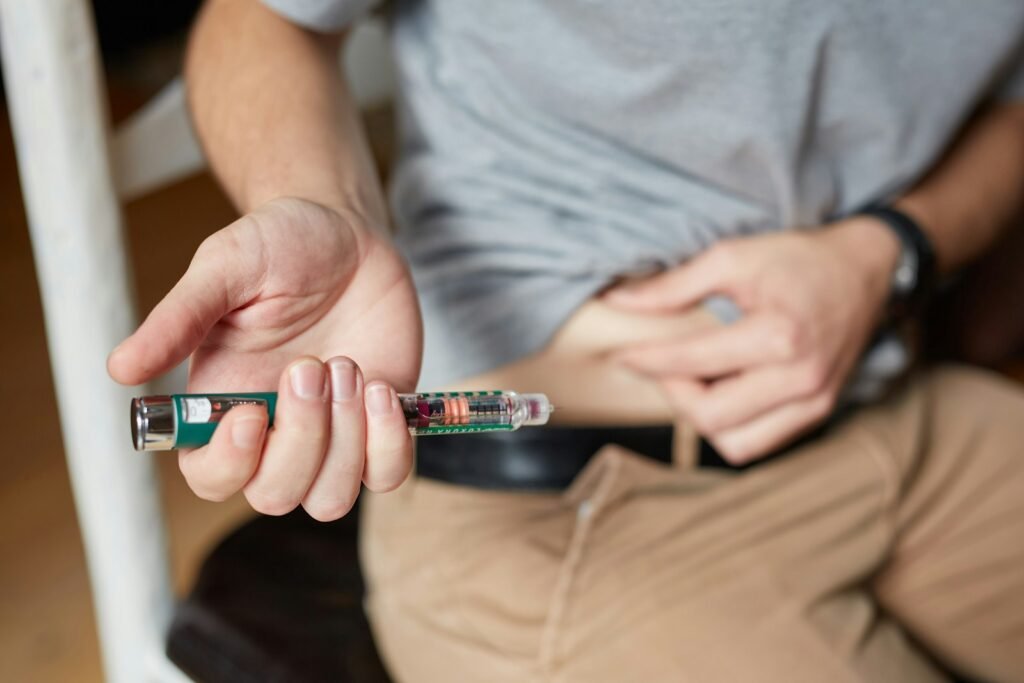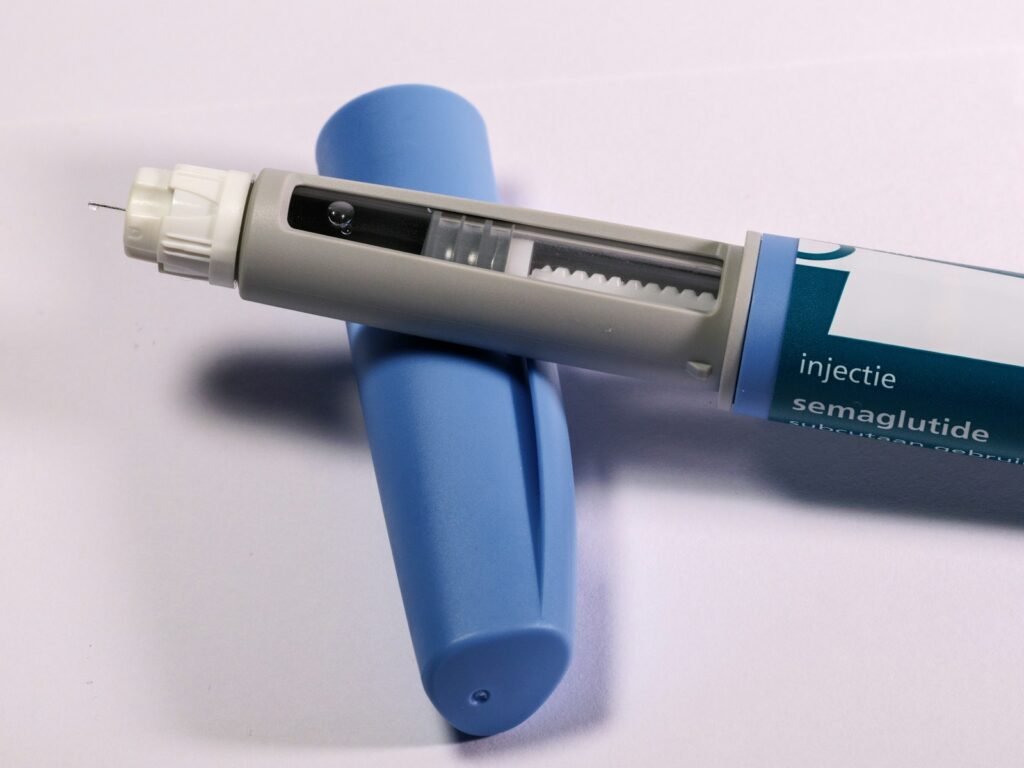For 100 years, insulin has been the primary treatment for type 1 diabetes (T1D) and despite being a lifesaver for millions, it is far from perfect. New clinical trials indicate that semaglutide, the active ingredient in Ozempic and Wegovy, may be the first significant add-on therapy for T1D since the introduction of insulin in 1921. As the study published in NEJM evidence suggests, semaglutide enhances glycemic control and facilitates weight loss in T1D patients, including those struggling with obesity in an overburdened population facing ‘double diabetes’ – a term describing the blend of diabetes with insulin resistant exacerbating the condition.
This discovery changes long-held ideas about how to treat T1D, bringing us closer to a world where insulin isn’t the only way to fight the disease. But why do people with type 1 diabetes (T1D) use a drug meant for type 2 diabetes (T2D)? And could this be the start of a new way to manage diabetes for everyone?
A Century of Insulin And Its Limits

The cornerstone treatment for Type 1 Diabetes (T1D)—an autoimmune condition where the pancreas ceases insulin production—is insulin therapy, first discovered by Frederick Banting and Charles Best in 1921. Despite technological advancements in diabetes care such as insulin pumps and CGMs (continuous glucose monitors), a significant number of patients continue to experience difficulties in achieving stable blood sugar control.
- Achieving an HbA1c level below 7% remains a challenge even with automation; only around 50% of T1D patients utilizing insulin pumps meet this benchmark.
- There has also been a dramatic increase in the incidence of obesity amongst individuals with T1D: the adult obesity rate has increased to 38%. This condition is known to be correlated with insulin resistance and an increased risk for cardiovascular diseases.
This has resulted in the development of “double diabetes,” a phenomenon in which T1D patients develop some metabolic characteristics associated with T2D and thus insulin therapy becomes inadequate for optimal management.
Semaglutide’s Surprising Role in Type 1 Diabetes

Initially designed for the management of Type 2 Diabetes (T2D), semaglutide and other GLP-1 receptor agonists (GLP-1 RAs) function by:
- Diminishing post-prandial blood sugar surges through slower gastric emptying.
- Improving insulin secretion (among those with some preserved beta-cell function).
Suppressing the action of glucagon, a diabetes-associated hormone which raises blood sugar levels.
In the context of Type 1 Diabetes (T1D), where nearly all insulin production is missing, these actions have until recently provoked skepticism from researchers.
- Participants with treatment achieved 36% of the time with glucose levels >70% in target range compared with 0% on placebo.
- Average weight loss of 20 lbs (9.2 kg) after 26 weeks.
- 22% reduction in daily insulin requirement suggesting marked improvement in insulin sensitivity.
Importantly, there was no increase in the risk of severe hypoglycemia or diabetic ketoacidosis (DKA) which had raised concerns that T1D would be GLP-1 destabilized.
The Double Diabetes Dilemma: Why Semaglutide Fills a Gap

The distinction between Type 1 Diabetes (T1D) and Type 2 Diabetes (T2D) has blurred due to increasing obesity rates; T1D was once seen as a “lean” disease.
- Current statistics show that obesity in T1D has risen from 30% in 2008 to 38% today.
- The cycle of obesity becomes more severe with T1D due to the need for higher insulin doses which results in greater weight gain.
Semaglutide breaks this cycle by:
- Reducing insulin needs by as much as 23 units per day.
- Lowering the major predictor of complications, which is glucose variability.
“The presence of Type 1 diabetes does not preclude the existence of Type 2 diabetes, which in our opinion, justifies the use of treatments that, at this time, are limited to Type 2 diabetes patients”, adds the principal investigator of the ADJUST-T1D trial, Dr. Viral Shah.
Safety Concerns: Ketosis and Gastrointestinal Side Effects

Although the trial indicated no episodes of DKA, two rare cases of euglycemic ketosis excessive ketones without elevated blood sugar levels-emerged with the use of semaglutide. This side effect is infrequent but necessitates vigilance due to its severe nature.
The additional side effects were similar to those observed in T2D:
- Among participants, 72% reported nausea or gastrointestinal distress compared with only 25% in the placebo group.
- The absence of severe hypoglycemia episodes between groups is reassuring for T1D patients.
The Road to FDA Approval And Insurance Hurdles
Even though the efficacy data for semaglutide is promising, the FDA has not yet approved it for use in Type 1 Diabetes (T1D). This means that many patients have to rely on off-label prescriptions, which can be very expensive.
- Coverage Restrictions: Most insurance plans don’t cover GLP-1s for T1D because they haven’t been approved for coverage.
- Active Research: Further studies, such as those currently being conducted on tirzepatide (Mounjaro), might eventually result in approval from the proper authorities.
In a recent interview, Dr. Ahmad Haidar, a researcher at McGill University, stated:
“Although this research does provide us with some relevant insights, it does not equip us with the proper mechanisms which could help us alter our approaches to T1D management.”
The Future: A New Era for Type 1 Diabetes Treatment?

If it gets the green light, semaglutide could be the first major T1D treatment other than insulin in a hundred years. Its possible uses go beyond controlling glucose:
- Losing weight may lower the risk of heart disease.
- Lower doses of insulin could make it easier to take it all the time.
But there are still problems:
- For widespread use, costs and access need to get better.
- We still need long-term safety data.
Dr. Shah says:
“This could be the start of a big change in how we treat type 1 diabetes. Instead of just giving insulin, we could use therapies that deal with all of its metabolic problems.”
Conclusion: A Turning Point in Diabetes Care

The success of semaglutide in T1D trials could lead to a major change in the way we treat diabetes. Instead of just using insulin, we could use smarter therapies that target multiple problems. This could mean better control, fewer problems, and a lighter daily load for people with “double diabetes.”
But the journey isn’t over yet. Researchers are pushing for bigger trials and government approval, and one thing is clear: insulin is no longer the only thing that can help people with type 1 diabetes.
Sources:

Suhail Ahmed is a passionate digital professional and nature enthusiast with over 8 years of experience in content strategy, SEO, web development, and digital operations. Alongside his freelance journey, Suhail actively contributes to nature and wildlife platforms like Discover Wildlife, where he channels his curiosity for the planet into engaging, educational storytelling.
With a strong background in managing digital ecosystems — from ecommerce stores and WordPress websites to social media and automation — Suhail merges technical precision with creative insight. His content reflects a rare balance: SEO-friendly yet deeply human, data-informed yet emotionally resonant.
Driven by a love for discovery and storytelling, Suhail believes in using digital platforms to amplify causes that matter — especially those protecting Earth’s biodiversity and inspiring sustainable living. Whether he’s managing online projects or crafting wildlife content, his goal remains the same: to inform, inspire, and leave a positive digital footprint.




